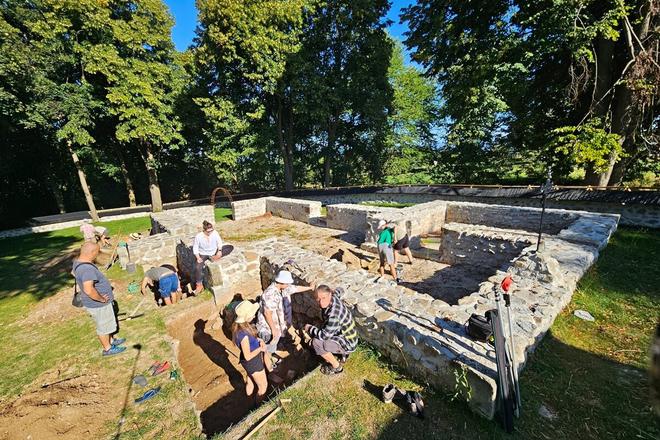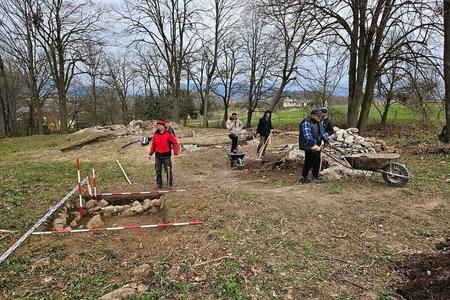Archaeologists in central Slovakia have uncovered the remains of what is believed to be the oldest church in the Pohronie valley, hidden for centuries beneath the floor of a village chapel.
Excavations at the Church of the Epiphany in Ostrá Lúka revealed the stone foundations of a Romanesque apse and nave built in the late 12th century, later rebuilt as a Gothic structure in the 13th century. Among the finds was the grave of a child, placed at the junction of the nave and the presbytery. The skeleton is now being analysed, writes My Zvolen.
“The research confirmed last year’s findings. The most important thing is that the church dates from the 12th century – its earliest, Romanesque part – and in the last third of the 13th century another early Gothic church was built here on those foundations,” said Ján Beljak, who led the excavation for the Slovak Academy of Sciences.
According to Beljak, the discovery marks a milestone in understanding medieval architecture in the region. “This is the oldest sacred architecture in the middle Pohronie. It is the oldest church from Hronský Beňadik heading east, and from Bzovík heading north,” he said.
This year the team concentrated on the southern section of the site, where they exposed the remains of the Romanesque sanctuary beneath the modern floor. “Already last year we found traces of it, but now we can confirm it is a Romanesque apse with an associated nave. Radiocarbon dating shows the church was built in the final decades of the 12th century,” Beljak explained.
Students from Hungary join effort to reveal medieval past
The dig was the second season of fieldwork at Ostrá Lúka, carried out by the Archaeological Institute in Nitra alongside a summer school run by the Constantine the Philosopher University in Nitra, with support from the Banská Bystrica regional authority. Students from Slovakia and Hungary also joined the excavation.
Beljak said he was grateful for the backing of the local community and the owner of the Ostrolúcky manor, who helped transform the site into a public space. Once overgrown and neglected, it has now been redeveloped into a small memorial and educational zone, with preserved foundations, a reconstructed crypt and restored cemetery walls. Information boards will be added in the coming months.
Archaeologists plan to return next year to continue work at the site, which they hope will shed further light on the religious and social life of medieval Slovakia.







